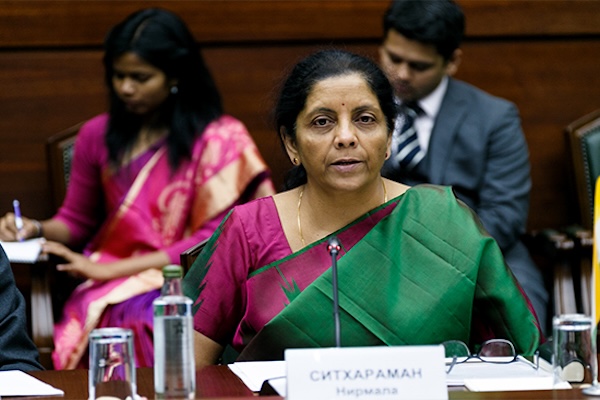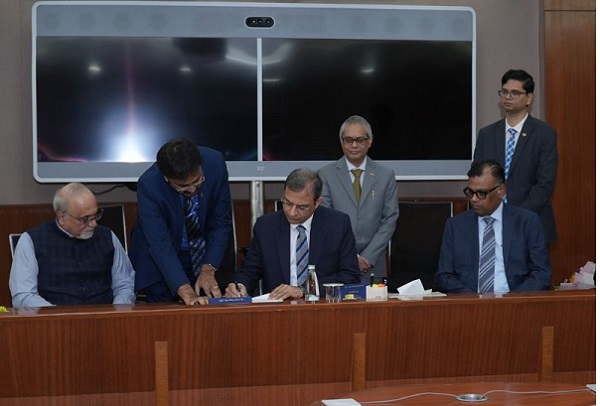.png)

Dr. Srinath Sridharan is a Corporate Advisor & Independent Director on Corporate Boards. He is the author of ‘Family and Dhanda’.
May 7, 2025 at 7:49 AM IST
In the early hours of May 7, 2025, India executed Operation Sindoor, a coordinated military response involving precision strikes on ‘terrorist infrastructure’ across Pakistan and Pakistan-Occupied Kashmir. The operation was a deliberate and calibrated answer to the Pahalgam terror attack that claimed innocent lives. It was carried out by the Indian armed forces, reflecting a high degree of planning, technological sophistication and institutional coherence.
This is a new phase in India’s national security doctrine.
The response was designed to be proportionate, specific and strategically framed. The absence of collateral damage or civilian impact reflects a maturing security posture. The operation sends a message that is both clear and contained. India will act with resolve against cross-border terrorism. It will do so within the boundaries of strategic discipline and geopolitical awareness.
The Indian financial markets have absorbed the news with composure. Equity indices opened lower but stabilised quickly.
Investors had anticipated a structured response following the Pahalgam attack and had already priced in such a development. This reflects the increasing maturity of Indian markets and their ability to remain anchored even in the face of regional military engagements.
Sector-specific movements were more telling. Defence and aerospace stocks saw renewed interest on expectations of stronger domestic procurement and continued policy support for indigenous manufacturing. These movements are consistent with India’s longer-term trajectory of defence self-reliance.
Recent milestones such as the Agni-5 MIRV test under Mission Divyastra and the record levels of defence production in 2023-2024 indicate a system that is steadily deepening its technological capabilities.
The most significant driver of market resilience has been the sustained flow of foreign institutional investment. Over the past fourteen trading sessions, foreign investors have brought in nearly ₹440 billion into the cash market (They were net sellers in index futures to the tune of ₹433.7 billion so far in May). Their conviction is based on global macroeconomic factors. A weakening dollar, moderated growth in the United States and China, and the expectation that India will lead in global growth for the remainder of the decade have reshaped global investor preferences.
The conclusion of the India–UK Free Trade Agreement is another stabilising force. It strengthens India’s position in global trade and opens pathways for long-term economic engagement. Investors see this as a sign of policy coherence and global integration. It complements domestic fundamentals and strengthens India’s medium-term economic narrative.
There has also been a notable shift in portfolio allocations. Investors are moving towards large-cap equities. This reflects concerns about valuation excesses in mid- and small-cap segments and a preference for balance-sheet strength and policy visibility. The broad direction of capital is now favouring scalable and regulated businesses.
While markets have absorbed the developments of Operation Sindoor with calm, they remain sensitive to potential escalation. In such a case, there may be early selling pressure and a recalibration of risk. That said, absent such developments, the market structure remains strong.
Historically, stock markets do not react uniformly to the onset of military conflict. The initial phase often triggers short-term volatility driven by uncertainty, risk-off sentiment, and capital flight to safe havens such as gold or government bonds.
However, market behaviour tends to stabilise once the scope, duration, and geography of the conflict become clearer. In limited or localised military operations, especially when they do not disrupt critical infrastructure or civilian life, markets frequently recover quickly as investors distinguish between headline risks and structural fundamentals.
In protracted wars or when civilian or economic assets are targeted, the impact on valuations can be deeper and more sustained. Ultimately, markets are driven less by the event itself and more by the anticipated economic fallout, global investor sentiment, and the perceived ability of institutions to maintain continuity and order.
The political signal from the operation is one of quiet confidence. India acted with precision. There was no inflammatory rhetoric. The focus remained on eliminating terrorist threats, not creating a broader conflict. This posture is being recognised internationally as an assertion of sovereign responsibility rather than adventurism.
India is neither ignoring its security challenges nor reacting impulsively. It is building deterrence, reinforcing economic fundamentals and responding to threats with operational depth and institutional sobriety.
In a region often defined by volatility, India is beginning to define itself by clarity, composure and conviction—turning strategic resolve into economic credibility, and resilience into a quiet form of leadership. For global investors, strategic analysts and foreign governments, this is a moment worth observing closely. It marks the arrival of a more confident and calibrated India on the global stage.
This piece is not investment advice.
Views of the author are personal



